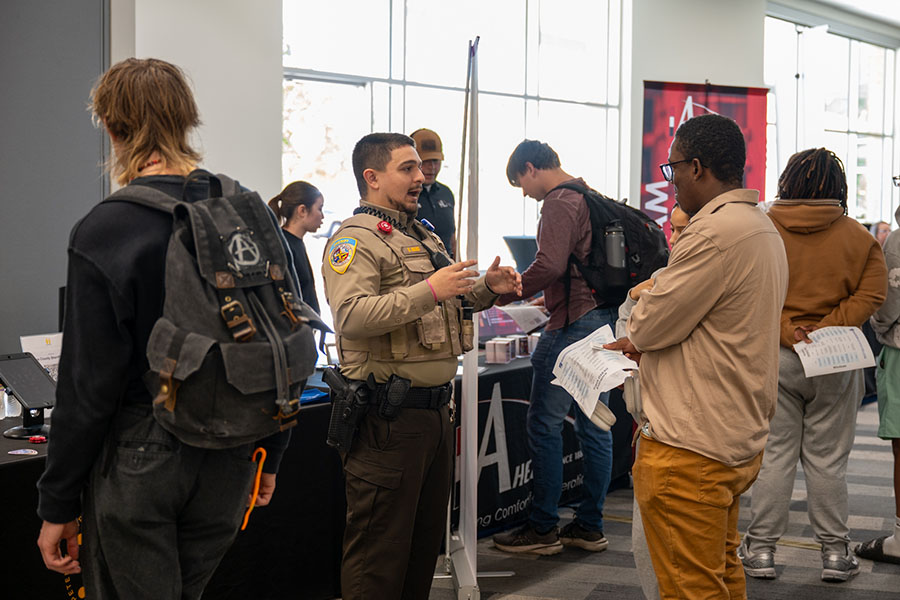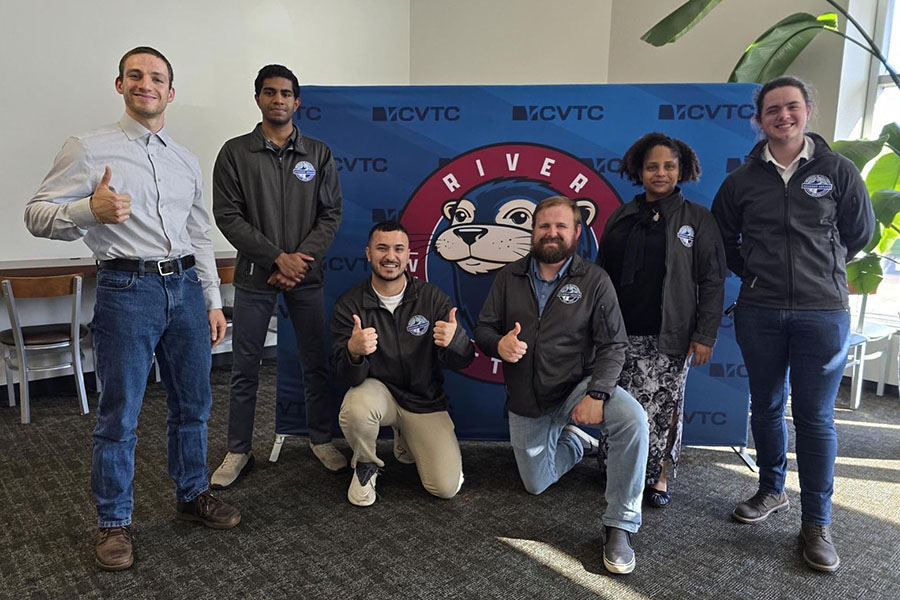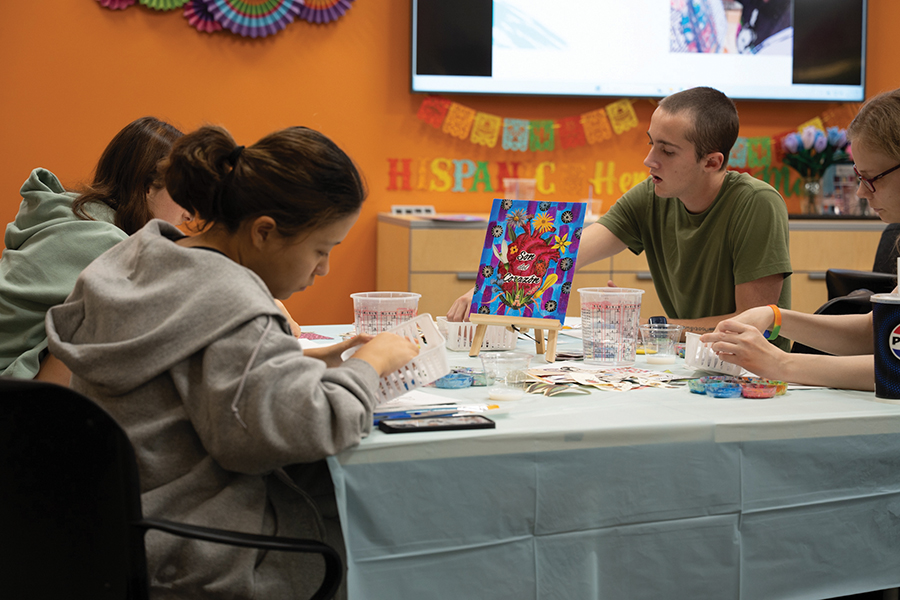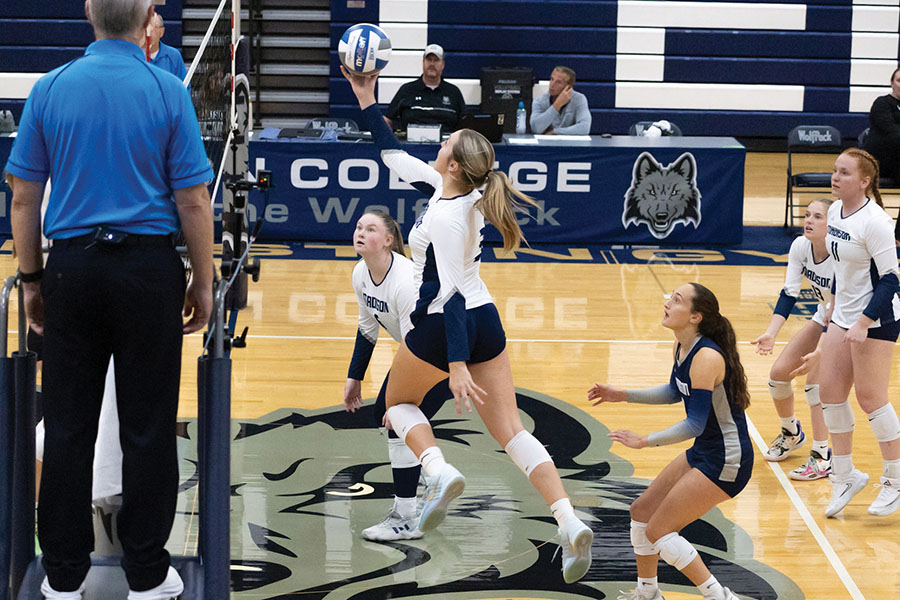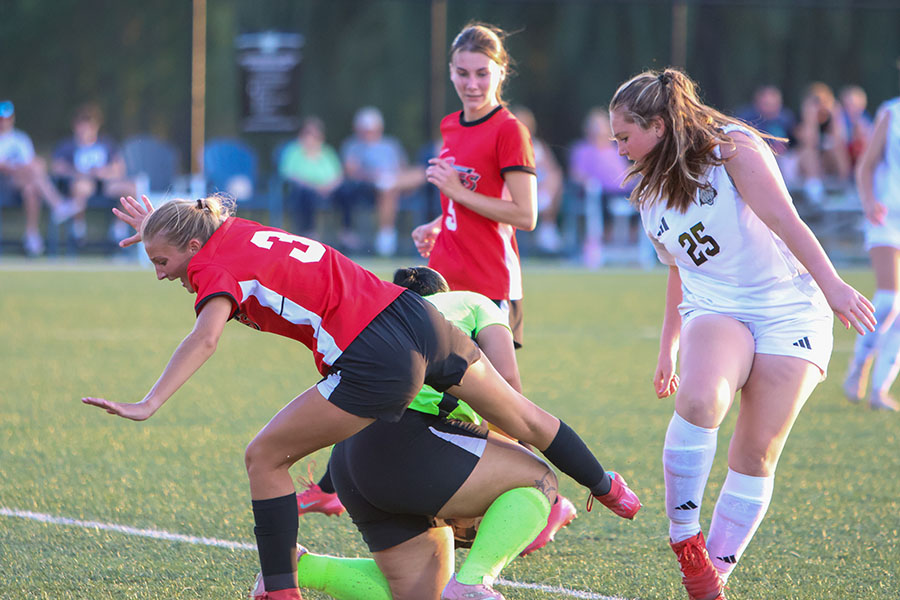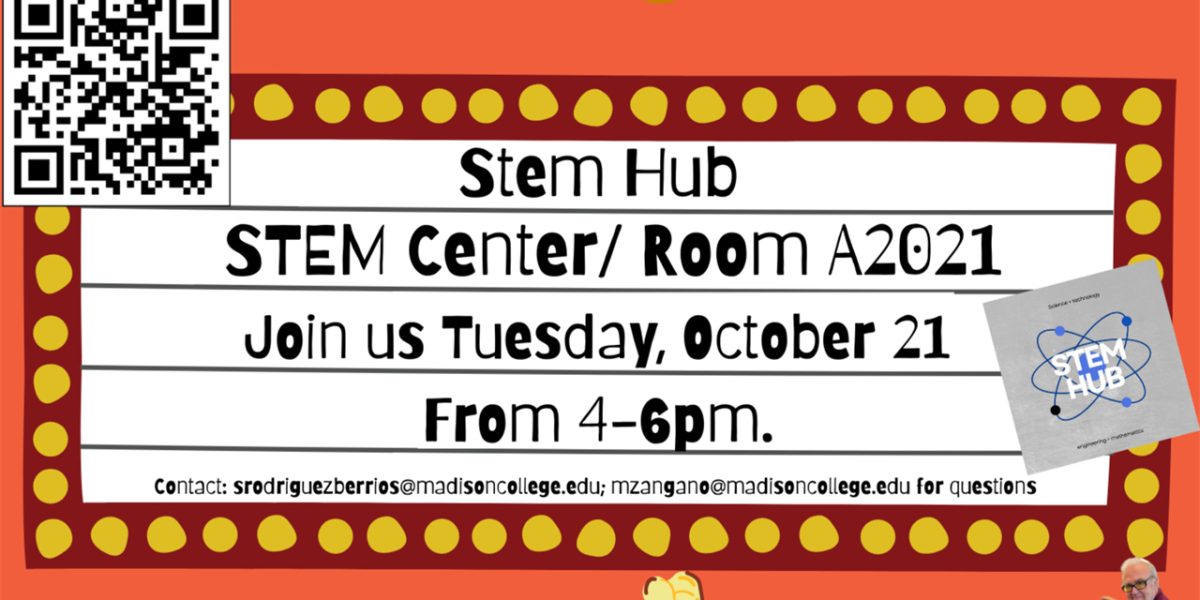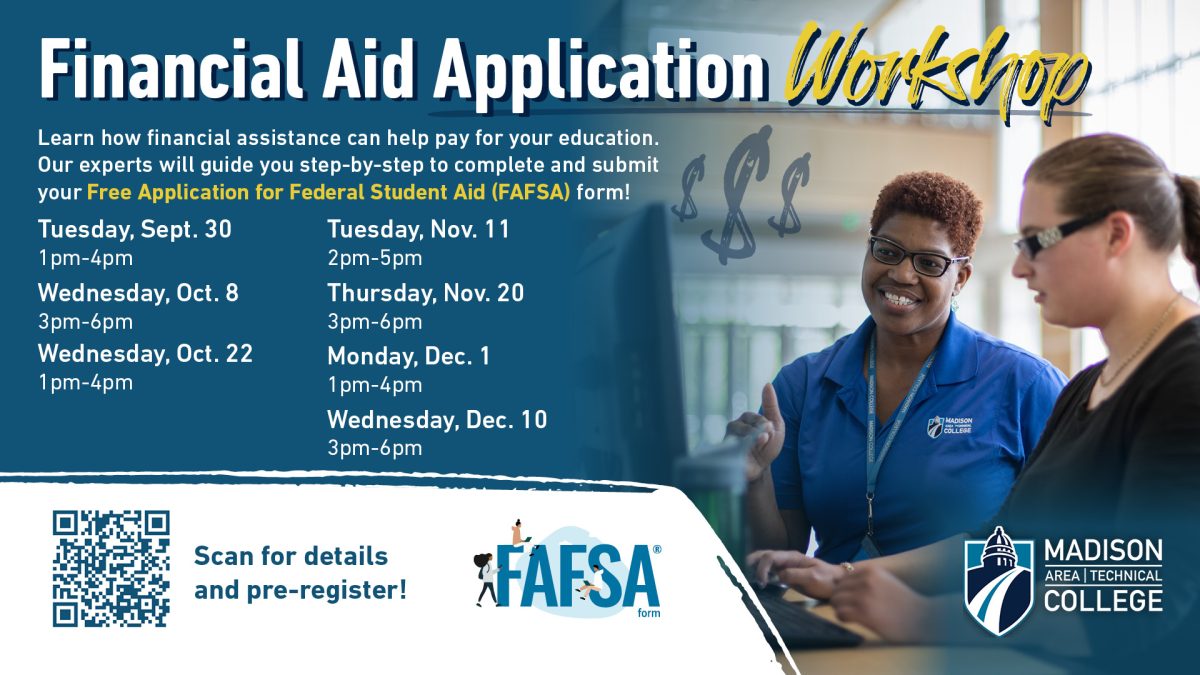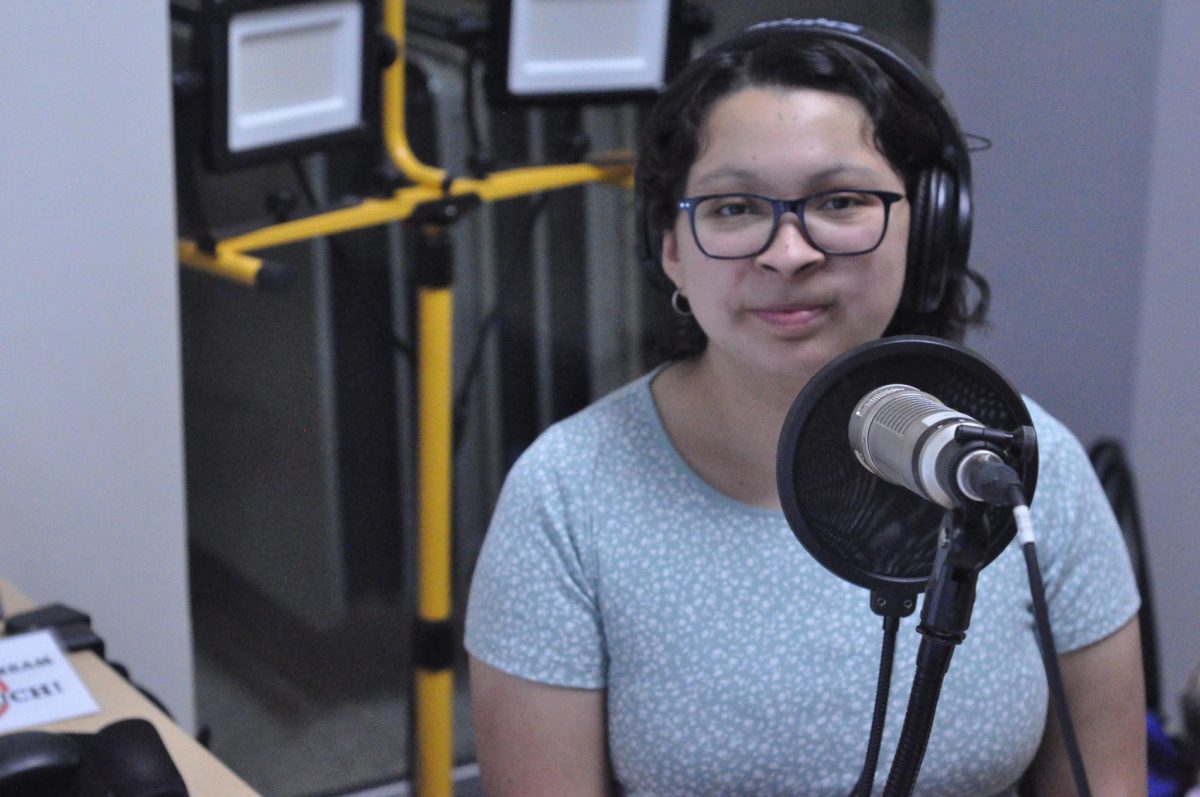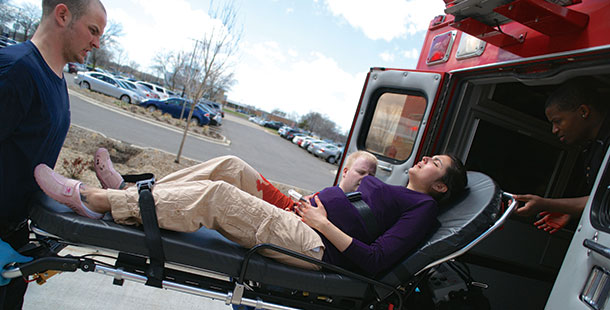At 1 p.m. on April 25, a 911 emergency call stated that a car accident had happened involving suspected injuries on the Madison College campus, and the college’s first cross-program mock disaster simulation had begun.
The simulation included a person who needed to be transported to the hospital using Med Flight, other “victims” who were transported to the college clinic and given medical care, and a simulated incident with a pregnant bystander.
After the simulation, a debriefing occurred. The point of this debriefing, other than de-escalating the stress of the day, was for everyone to discuss what went well and what didn’t in each discipline. The students were divided in groups into their specific discipline and then according to the patients they took care of.
Jeffrey Wenzel, Karyn German and Patrick Anderson were the coordinators behind the emergency incident. They met a year ago to start organizing this event. For a first time, the consensus is that the simulation was successful.
“Overall it was exceptional it was amazing when you think about the number of people who were there to do it, to also make sure that things were running smoothly as well as video-tape it couldn’t have been any smoother,” Nursing Instructor Karyn German said. “I’ve done multiple mass-casualty or emergency incidents and this was probably the number one best one. It was done extremely well.”
One of the objectives of this incident was to reinforce the collaboration between health and protective services. For Simulation Instruction Coordinator Jeff Wenzel, this objective was met.
“[The students] far exceeded our expectations with the collaboration, they worked very well together. It looked like they had worked side by side for many years already because they were able to assess the situation. Their communication skills were excellent,” Wenzel said. “They were able to help the patients and help each other out when needed.”
Though successful, the simulation wasn’t perfect. For Karyn German, the main issue the students mentioned was communication.
“Communication is always one of the things that falls down. Either someone didn’t communicate something well, or they forgot to communicate something,” says German.
According to Patrick Anderson, program director for the EMS program, there was also an issue with the radio reports and missing equipment in students’ bags. Nonetheless, Anderson also pointed out that unexpected things happened during the drill, when the UW Med Flight doctor let students work on one of the victims even though it wasn’t planned.
German said when students didn’t follow or made mistakes, they were able to learn from it. The point of this drill was for students to learn how to operate and collaborate in an emergent, urgent setting.
Students asked for more exercises of this sort, with some suggested changes. Future incidents should involve fewer victims but with higher acuity so students can be more involved and practice the skills that they’ve learned throughout their academic career.
For the three coordinators, these simulations would be done more frequently, ideally every semester. They could involve the college as a whole to see how the entire community would respond to a mass-casualty incident.
For German, it could be an opportunity to integrate more programs and disciplines like journalism or psychology to make the scenarios even more realistic.
“It will be great to have a journalism student to be out there trying to interview patients and people that saw the accident or a psychology student to talk to some of the victims that were really upset,” German said.”


